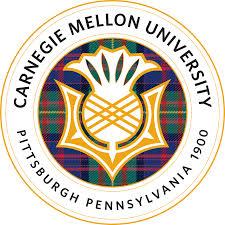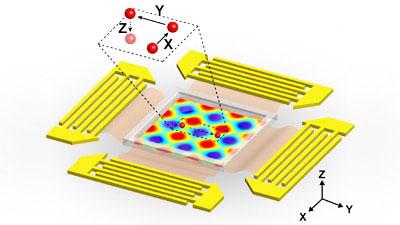Bioprinting at Carnegie Mellon University: Researchers Create Acoustic Tweezers to Move Cells Safely
 The 3D printing industry currently employs so many applications that it’s becoming nearly impossible to keep track–and if you are, that’s one long list. As you read along in this moment, designers are busy pumping out endless new innovations in apparel and shoes from the outrageous to the comfortable, the health and skincare industry is busy smoothing away our wrinkles, and manufacturers have discovered 3D metal printing is the bomb.
The 3D printing industry currently employs so many applications that it’s becoming nearly impossible to keep track–and if you are, that’s one long list. As you read along in this moment, designers are busy pumping out endless new innovations in apparel and shoes from the outrageous to the comfortable, the health and skincare industry is busy smoothing away our wrinkles, and manufacturers have discovered 3D metal printing is the bomb.
But a select group of scientists today will probably tell you the true importance–and the real challenge–is in the bioprinting of cellular structures–and seeing that they stay alive. We have made the first step in being able to create and manipulate them, but making a true foundation for them to grow from seems to be the secret to viability. This is literally like re-creating the human body from the very beginning, as those in bioprinting must look toward what certainly seems impossible–making blood vessels and nourishment for cells fabricated in a lab. One important consideration, however, is that these exercises all require scientists to maneuver and manipulate said cells and that’s one challenge that has to be mastered first.

“Configuration of the planar surface acoustic wave generators, used to generate volumetric nodes, surrounding the microfluidic experimental area. The Inset indicates a single particle within a ‘3D trapping node,’ which is independently manipulated along the x, y, or z axes.”
Researchers at Carnegie Mellon University have just released a paper regarding their acoustic tweezers, which can indeed be used to move 3D printed cells much more effectively and safely. Authored by Carnegie Mellon University President Subra Suresh, along with collaborators Tony Jun Huang from Pennsylvania State University, and Ming Dao from MIT, ‘Three-dimensional manipulation of single cells using surface acoustic waves’ has just been published in this week’s issue of the Proceedings of the National Academy of Sciences.
Backing up a bit from the overall challenge of making cells and then protecting their viability, these researchers point out that being able to get them, and place them properly, is key. With that in mind, they’ve created a technique that uses acoustic tweezers for the gentle manipulation of cells, relying on sound waves to capture and move them–and all in 3D.
“In this method, we use standing-wave phase shifts to move particles or cells in-plane, whereas the amplitude of acoustic vibrations is used to control particle motion along an orthogonal plane,” state the researchers in their paper. “We demonstrate, through controlled experiments guided by simulations, how acoustic vibrations result in micromanipulations in a microfluidic chamber by invoking physical principles that underlie the formation and regulation of complex, volumetric trapping nodes of particles and biological cells.”

“Numerical simulation results mapping the acoustic field around a particle that shows the physical operating principle for the 3D acoustic tweezers. The 3D trapping node in the microfluidic chamber is created by two superimposed, orthogonal, standing surface acoustic waves and the induced acoustic streaming.”
As with many processes in science and medicine–the less invasive the better–and that’s demonstrated clearly with this new method that involves employing a microfluidic device to generate sound, allowing for the 3D ‘trapping node’ that allows cells to be herded around. The secret in using the tweezers is in trapping the cells along a specific three axes.
“The results presented in this paper provide a unique pathway to manipulate biological cells, accurately and in three dimensions, without the need for any invasive contact, tagging or biochemical labeling,” Suresh said. “This approach could lead to new possibilities for research and applications in such areas as regenerative medicine, neuroscience, tissue engineering, bio-manufacturing and cancer metastasis.”
Because the cells are obviously incredibly fragile, a gentle approach is key here, as well as one that prohibits contamination. As a good comparison, the researchers point out that this technology is similar to the safety and frequency of ultrasound used in the imaging of pregnant mothers as growing fetuses are monitored. Cells can be picked up and dropped off, or even placed on top of other cells, with this process offering a new way to make networks.
“Three-dimensional acoustic tweezers were used to pattern cells with control over the number of cells, cell spacing, and the confined geometry, which may offer a unique way to print neuron cells to create artificial neural networks for applications in neuron science and regenerative neuron medicine,” state the researchers in their paper.
Working as ‘building blocks,’ the tweezers can lead the way to imaging and further analysis. And very importantly, they will assist in translating and 3D printing, offering contact-free precision in the lab, and leading the way in bioprinting to eventually creating entire organs.
The paper’s authors include Feng Guo, Zhangming Mao, Yuchao Chen, Zhiwei Xie, James P. Lata, Peng Li, Liqiang Ren, Jiayang Liu, Jian Yang, Ming Dao, Subra Suresh, and Tony Jun Huang. Discuss your thoughts on these new tools being used for moving cellular structures in the Acoustic Tweezers and Bioprinted Cells forum over at 3DPB.com.
Subscribe to Our Email Newsletter
Stay up-to-date on all the latest news from the 3D printing industry and receive information and offers from third party vendors.
You May Also Like
Profiling a Construction 3D Printing Pioneer: US Army Corps of Engineers’ Megan Kreiger
The world of construction 3D printing is still so new that the true experts can probably be counted on two hands. Among them is Megan Kreiger, Portfolio Manager of Additive...
US Army Corps of Engineers Taps Lincoln Electric & Eaton for Largest 3D Printed US Civil Works Part
The Soo Locks sit on the US-Canadian border, enabling maritime travel between Lake Superior and Lake Huron, from which ships can reach the rest of the Great Lakes. Crafts carrying...
Construction 3D Printing CEO Reflects on Being Female in Construction
Natalie Wadley, CEO of ChangeMaker3D, could hear the words of her daughter sitting next to her resounding in her head. “Mum, MUM, you’ve won!” Wadley had just won the prestigious...
1Print to Commercialize 3D Printed Coastal Resilience Solutions
1Print, a company that specializes in deploying additive construction (AC) for infrastructure projects, has entered an agreement with the University of Miami (UM) to accelerate commercialization of the SEAHIVE shoreline...





























